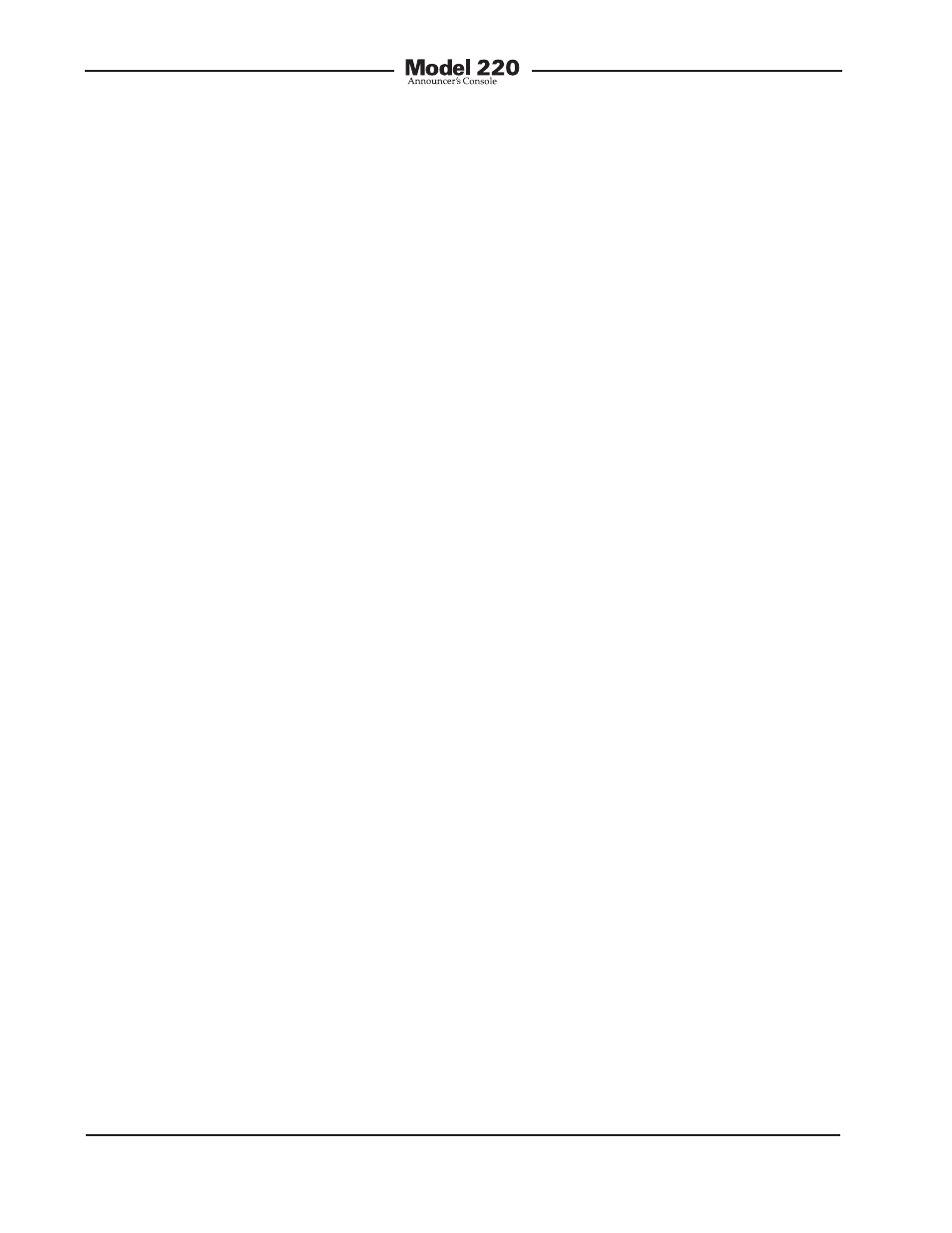Symptoms of insufficient power – Studio Technologies 220 2013 User Manual
Page 32

Issue 5, February 2013
Model 220 User Guide
Page 32
Studio Technologies, Inc.
The resistors and the power source work
together to provide 48 ±4 volts, up to a
maximum current of 10 milliamperes.
Symptoms of Insufficient
Power
A core part of the Model 220’s internal cir-
cuitry is a switch-mode power supply that
produces +45 volts, +12 volts, +5 volts,
and –12 volts. This power supply circuit
works very well as long as it is “fed” with
sufficient input voltage and current. “Suf-
ficient” is defined as a minimum of 24 volts
on the IFB input and 20 volts on the exter-
nal 24 volt DC input. The necessary cur-
rent, 125 milliamperes for the IFB input and
80 milliamperes for the external input, must
be supplied over their respective voltage
ranges.
It’s worth discussing what will happen if
either power source falls below its specified
minimum. Typically, if the Model 220 is be-
ing powered by an external 24 volt nominal
power source, normal operation will con-
tinue until the input falls to the 18-20 volt
range. As the input voltage drops below
this range the Model 220’s internal power
supply will have reduced stability, operating
in this manner until its low-voltage shut-
down circuit halts operation. Note that as
the input voltage moves down from 24 volts
the input current will rise proportionately to
make up for the loss of power.
If an IFB circuit is powering the Model 220,
maintaining the required voltage and cur-
rent is more critical. Should the voltage or
current fall below the specified minimum,
the Model 220’s power supply circuit will
again become unstable. This will become
an issue as noise will be induced into the
IFB circuit’s audio signals. The reason
is simple: an IFB circuit “multiplexes”
3-conductors so that they carry both power
and audio signals. If sufficient amounts
of voltage and current are supplied to the
Model 220’s IFB input, the Model 220’s
power supply will draw a steady amount
of energy. This will not disturb the analog
signals on pin 1 (common for DC and au-
dio) and pin 2 (DC and channel 1 audio).
But if the Model 220’s power supply is
not supplied with sufficient energy (volts x
amps) it will try to draw what it needs from
the IFB circuit, becoming unstable in the
process. The IFB circuit’s audio signals
will be corrupted by the power supply’s
attempt to draw enough power. Instead
of nice clean audio there will be squeaks,
squeals, and some awfully funky noises
added. Again, in a low-voltage or low-
current situation, no damage will be done
to the Model 220’s circuitry but correct
operation will not be possible.
In most cases maintaining the IFB circuit’s
required voltage and current shouldn’t
be a problem. But issues may arise due
to malfunctioning IFB circuit sources or
poor interconnect cabling. Typically, ex-
cessive cable length won’t be the cause
of a problem. Generally, problems will be
caused by broken or damaged connec-
tor pins, dirty patch points, or damaged
(partially open) cable conductors. Measur-
ing the IFB circuit’s voltage and current
draw directly at the Model 220’s IFB input
connector will quickly identify if there’s a
power issue.
And now for another shameless “plug”
for other Studio Technologies products:
Frankly, most devices that supply IFB
circuits for broadcast applications use
outdated technology that provides medio-
cre performance. That’s why Studio Tech-
nologies’ developed high-performance
IFB interface units. These products do an
excellent job of providing power and audio
